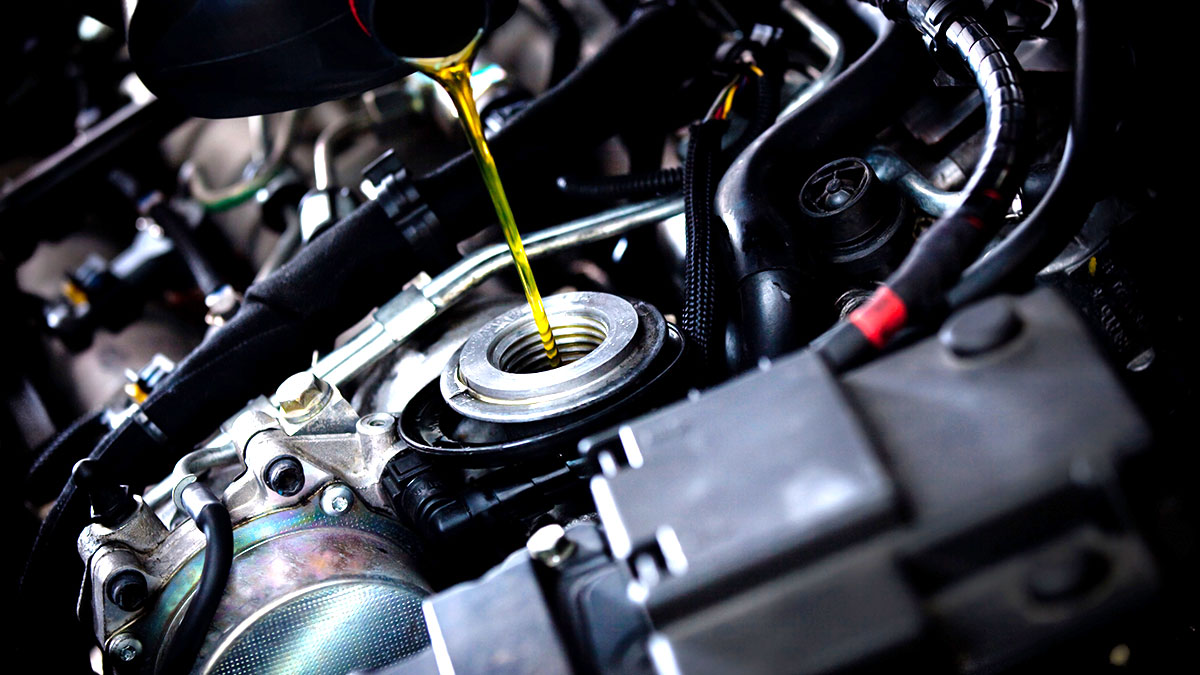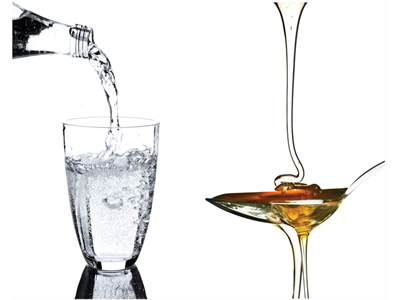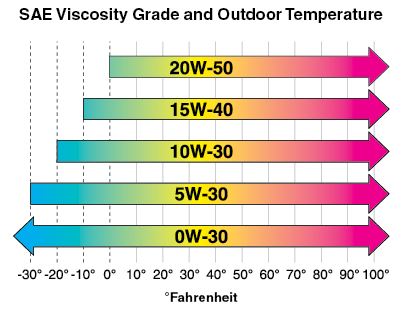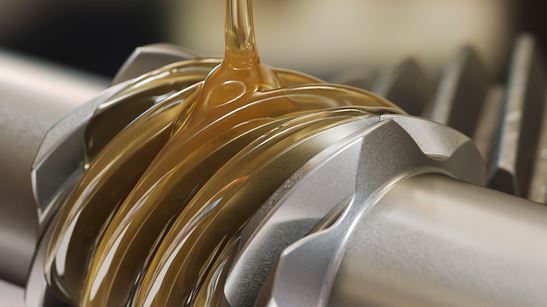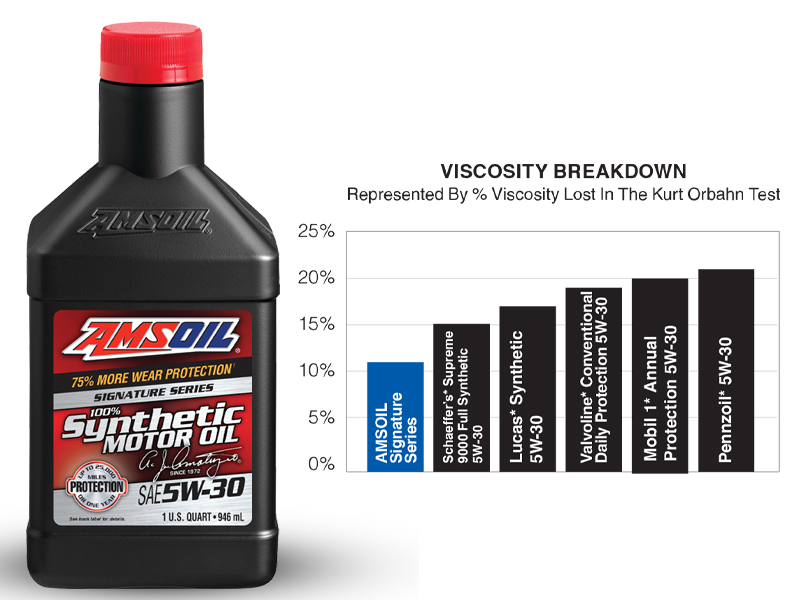Understanding Oil Viscosity
Viscosity is the measure of a fluid’s resistance to flow.

The physical properties of lubricants are measured by characteristics like viscosity, shear stability, high- and low-temperature performance, water resistance and volatility. Lubrication science seeks to optimize a lubricant’s performance by managing these properties using different base oils and additives. A lubricant’s viscosity and how it changes under different temperatures and operating conditions is one of the most important properties that determines lubricant performance and protection.
When external forces such as gravity act on a fluid, the molecules within the fluid begin to move against each other, resulting in molecular-level friction that resists flow. The greater the internal friction, the higher the viscosity of the fluid. How the viscosity of a fluid reacts to changes in temperature and pressure determines how well a fluid can perform the basic functions of a lubricant.
Lubricant base oils thicken as they cool and will solidify when the temperature drops below a certain threshold, called pour point. Thickening increases the lubricant’s load-carrying capabilities, but its ability to circulate becomes significantly impaired. On the other hand, lubricants get thinner when heated, decreasing their ability to carry a load and prevent metal-to-metal contact.
Extreme pressure can also lower viscosity, called mechanical shear, decreasing the lubricant’s film strength and ability to prevent metal-to-metal contact and wear. However, attempting to counter this by choosing a higher viscosity can cause oil starvation as it won’t flow freely through smaller passages. Proper viscosity for the intended application is critical to ensure oil circulates properly and provides adequate film strength under pressure.
Measuring viscosity
In simple terms, viscosity is the measurement of the internal friction of a liquid, or its resistance to flow. A lubricant’s viscosity range is typically indicated using a kinematic and dynamic grading system, such as those established by the Society of Automotive Engineers (SAE) or the International Organization for Standardization (ISO).
Requirements for gasoline and diesel motor oils include the SAE J-300 Engine Oils Viscosity Classification and the American Petroleum Institute (API) Service Classification, among others. These tests are designed to replicate specific operating conditions, allowing formulators, original equipment manufacturers (OEMs) and consumers to understand each lubricant’s functional characteristics and limitations.
- Low-viscosity fluids may be described as thin and light.
- High-viscosity fluids may be described as thick and heavy.
- Low-viscosity motor oil (0W-20) flows faster than high-viscosity oil (20W-50).
Kinematic viscosity
Kinematic viscosity is the lubricant’s resistance to flow and shear due to gravity. To illustrate, imagine pouring two containers, one filled with water and the other with honey. Each fluid’s kinematic viscosity governs the rate at which it flows. Since the kinematic viscosity of water is lower, it flows faster.
Kinematic viscosity, measured using ASTM D445 methodology, determines an SAE oil’s high-temperature or operating temperature viscosity rating — the “30” in 5W-30 motor oil. This is the number you need to be most concerned with.
The kinematic viscosity test attempts to simulate viscosity at normal operating conditions for a passenger car or light truck. The test is performed at 100°C (212°F) and/or 40°C (104°F), depending on the grading system being used.
The value at 100°C is used to determine the SAE viscosity grade, by measuring how long the oil takes to completely flow from a viscometer device heated to 100°C. The elapsed time in seconds is converted to centistokes (cSt). Lower values reflect lighter-viscosity oils.
Dynamic (absolute) viscosity
Dynamic viscosity is defined as the lubricant’s resistance to flow measured by resistance. Imagine the amount of energy required to move a solid object through the fluid. It takes less energy to stir water compared to honey because the dynamic viscosity of water is lower.
Dynamic viscosity is measured by the Cold Crank Simulator (CCS) test (ASTM D5293). Dynamic viscosity determines an oil’s low-temperature, winter or “W” viscosity rating — the “5W” in 5W-30 motor oil. The lower the “W” rating, the faster the oil flows when cold and the easier it is for the engine to turn over when starting.
The CCS viscosity test evaluates the amount of energy it takes to start an engine at a specified temperature; the lower the viscosity grade, the lower the temperature at which the test is performed. The test assigns a value in centipoise (cP), used to determine the viscosity grade.
Using Signature Series 5W-30 as an example, its viscosity at -30°C (-22°F) can be no greater than 6600 cP to receive a 5W grade. Lower values reflect lighter-viscosity oils.
Viscosity Index
The Viscosity Index (VI) of a lubricating fluid refers to how much the viscosity of the fluid changes due to temperature. A high VI (above 95) indicates the fluid undergoes little viscosity change due to temperature fluctuations, while a low VI indicates a relatively large viscosity change.
Fluids with a high VI provide more protection to critical components over a wide range of temperatures by maintaining fluid thickness and the necessary fluid barrier between parts. The Viscosity Index Test (ASTM D2270) is based on the kinematic viscosity of the fluid at 40°C (104°F) and 100°C (212°F).
Synthetic fluids typically have much higher VI numbers compared to conventional fluids, meaning they provide improved protection to critical components over a wider range of temperatures.
AMSOIL synthetic lubricants boast high VI numbers, meaning they’re more stable than competing lubricants under extreme temperatures and pressures, so you can count on them to deliver outstanding protection, even under unpredictable operating conditions.
Choose the right viscosity
Knowing that a fluid’s viscosity is related to its ability to carry a load, one might think that a more viscous fluid would be better. However, use of lubricants with a higher-than-recommended viscosity can be just as detrimental as using one that’s viscosity is too low, and either can lead to shorter lubricant lifespan.
The key is to select a fluid with a viscosity that is right for the application. The viscosity of an effective lubricant must be adequate to keep moving parts separated under normal operating temperatures and pressures, while resisting thickening when cold. The OEM will provide the correct viscosity for each application in the owner’s manual. You can also cross-reference our AMSOIL Product Guides or contact AMSOIL Product Support at (715) 399-8324
Lubricants with inadequate viscosity for the application may cause:
- Increased metal-to-metal contact, friction and wear
- Increased oil consumption
- Leaking seals
Lubricants with too high a viscosity for the application may cause:
- Increased fluid friction and operating temperatures
- Poor cold-temperature fluidity and lubrication
- Reduced energy efficiency
Viscosity control
AMSOIL synthetic lubricants are designed to deliver the optimum viscosity for their intended applications. They are engineered with advanced base-oil formulations and additive packages designed to provide improved performance, greater reliability and robust protection against viscosity breakdown under extreme operating conditions, for your peace of mind.


